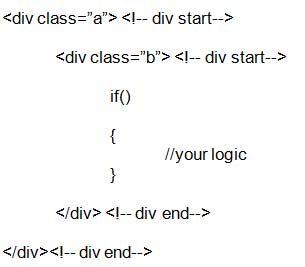Dilpreet Kaur
2025-12-25
7 min read
Top eCommerce Development Companies in the USA for 2026
Finding the right partner can make or break your online business.
Read More
It is a well-known fact that in any industry standardization positively impacts the business. Similarly, in the software industry, establishing coding standards is essential for successful implementation of a program. The smooth functioning of software programs is vital for the success of most organizations.
Coding standards can be understood as a series of procedure for a specific programming language that determines the programming style, procedures, methods, for various aspects of the program written in that language. They are a very critical attribute of software development.
A coding standard ensures that all developers writing the code in a particular language write according to the guidelines specified. This makes the code easy to understand and provides consistency in the code.
One of the most essential factors in a software system is the consistency of the coding standard. This is because it positively impacts the quality of the system. While using a software system, you need to ensure that the guidelines do not contradict each other. The source code that uses the standard should also be in harmony with the standard. The completed source code should indicate as if the code has been written by a single developer in a single session.
Without a coding standard, developers will use their own methods for coding and this has certain negative impacts.
1. Security Issues: The main reasons for commonly exploited software vulnerabilities are inconsistencies, bugs, and errors in the logic. Most of these problems arise due to programming errors that result from poor coding practices.
2. Site Performance Issues: Bad coding affects the overall performance of the site. Various performance issues include:
Implementing coding standards overcomes these problems providing you a secure site with minimal performance issues.
Certain factors need to be borne in mind while formulating a code:
Implementing coding standards in your software holds numerous advantages.
1. Increases Efficiency: It has been observed that software developers spend a significant amount of time in resolving issues that could have been prevented. Establishing coding standards enables the team to detect problems early or prevent them entirely. This enhances the efficiency throughout the software process.
2. Minimize the Risk of Project Failure: Many a time IT projects fail due to software development problems. Coding standards reduce the risk of failures.
3. Reduces Complexity: Higher the complexity of a code the more vulnerable it is to errors. Coding standards help develop software programs with reduced complexity thereby minimizing errors.
4. Maintenance becomes easy: If a source code is consistent it can be easily maintained. This is because anyone can step in at any stage maintain it or incorporate any modifications
5. Correction of bugs: A consistent source code makes it easy to locate and correct bugs in the software.
6. A comprehensive view: A consistent source code facilitates a clearer view of how the code fits within the larger application or the company as a whole.
7. Cost saving: A consistent code leads to a clear view which in turn results in the potential for more code reuse. This drastically reduces the cost and development effort.
1. Code Commenting & Documentation: IDE(Integrated Development Environment) has made commenting the code more useful. IDE and other tools can utilize your comments in different ways. Every routine should be started with a comment indicating what the routine does, its parameters, what it returns and possible errors and exceptions. The role of each file and class, contents of each class field and major steps of the complex codes should be summarized in comments.
For example:
/* function X is use for xxxxxxxxxx functionality */
function Add()
{
// your logic
}
2. Consistent Indentation: There are different indentation styles available to be followed. There is no particular style to be followed, you can choose any style. However, it is essential to maintain a consistent indentation style throughout your code.
For example:

3. Avoid Obvious Comments: You should ensure that you do not comment your code unnecessarily.
For example:
if() // this is my condition in if
{ // now I start brace
// here I started logic part
} // now I start brace
4. Code Grouping: Group your tasks in separate blocks/functions of code separating them with spaces. You can also add a comment at the beginning of every block.
For example:
/* This function is use for x funxtionlity*/
function Add()
{
// your logic
}
/* This function is use for y funxtionlity*/
function Delete()
{
// your logic
}
5. Consistent naming scheme: Two of the popular naming conventions are:
CamelCase :This entails capitalizing the first letter of each word except the first word.
For example:
/ Always use relevant names /
function deleteRecords($userName) // this name represents that this function “deleteRecords” is used for delete records
{
// your logic
}
Underscore: It entails using underscore between words such as mysql_real_string()
For example:
/ Always use relevant names /
function delete_records($user_name) // this name represents that this function “delete_records” is used for delete records
{
// your logic
}
You can opt for any naming scheme but it is vital to maintain the consistency of the naming scheme throughout. Generally, Camel case is used in Java while underscore is used in PHP development.
6. DRY Principle: It stands for Don’t Repeat Yourself. It is also known as DIE (Duplication is Evil). Under no circumstances you should copy and paste codes. Most software programs aim to automate repetitive tasks. Hence, the coding and web applications should be such that the same code is not repeated over and over again.
7. Avoid Deep Nesting: Having too many levels of nesting makes the code hard to comprehend. Hence, deep nesting should be avoided.
For example:
/* don’t use multiple conditions */
if()
{
if()
{
if()
{
//your logic
}
}
}
8. Limit Line Length: Reading tall and narrow columns of text is more comfortable for the eyes. Hence, you should try to use short line lengths. The ideal line length would be 80 characters.
For example:
The following line is not the standardized way of coding.
echo ‘Hello world’; echo ‘Welcome’; echo ‘Anything’;
Instead it should be split into short lines as below:
echo ‘Hello world’;
echo ‘Welcome’;
echo ‘Anything’;
9. File and Folder Organization: Although it is possible to write an entire application code in a single file, its readability and maintenance will be a problem. Hence, it is recommended to organize it into folders.
10. Object-oriented vs. Procedural :Well structured codes can be created through object-oriented programming whereas procedural functions facilitate performing specific tasks independently.
11. Read open source code: In the case of open source projects, the software is built using inputs of multiple developers. Hence, it is vital to maintain code readability so that the team can work on it. It is beneficial to browse through the source code of these projects to have an idea of what the developers are doing.
12. Code Refactoring”: Refactoring a code entails incorporating changes to enhance its readability without altering its functionality.
1. Inline Commenting: Every programming language offers the facility of inline comments. These are single line comments for the text after a certain point.
2. Descriptive Blocks: Single line comments are not sufficient in the case of large explanations. Every area of programming has pre-formatted comment templates that can be used. For instance, functions and library files use Descriptive blocks for commenting. However, descriptive blocks are used at the beginning of the file and single line comments are used in between.
3. Group/Class Comments: Block areas are not used very often for commenting. They are utilized for commenting out functions and loops. Strong block comments are frequently used at the head of backend documents or library files. CMS such as WordPress go all-out and write the documentation for every file in your website.
4. Front-end Code Commenting: Most frontend developers have moved from static HTML into JQuery and CSS codes. HTML comments are not as purposeful in programming applications.

Dilpreet Kaur
2025-12-25
7 min read
Finding the right partner can make or break your online business.
Read More
Dilpreet Kaur
2025-12-25
7 min read
Sending emails and hoping for the best isn’t a strategy.
Read More
Dilpreet Kaur
2025-12-25
7 min read
Finding the right digital marketing agency can feel overwhelming. With thousands of options out there, how do you know which one will actually help your business grow?
Read More